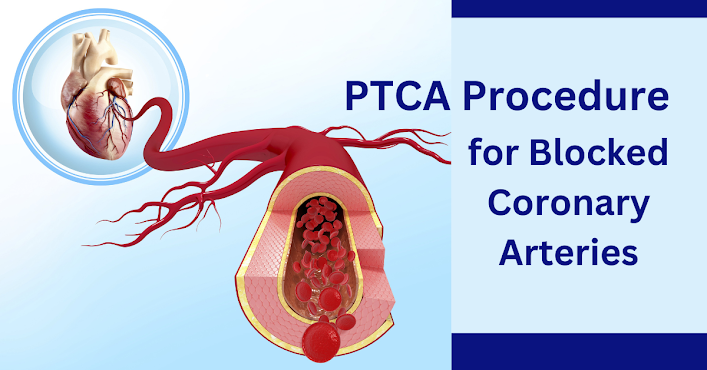The PTCA Procedure: Restoring Blood Flow to Blocked Coronary Arteries
PTCA, or percutaneous transluminal coronary angioplasty, is an invasive procedure to open blocked arteries in the heart that has become more and more common since it was first introduced in the mid-1980s. It involves inserting a wire into the arteries of the heart, where it then expands to push away blockages and restore blood flow to the heart muscle.
The PTCA procedure has increased in popularity because it can help reduce the severity of angina and other symptoms caused by coronary artery disease while also preventing heart attacks and strokes from occurring.
Introduction
An important part of the heart's circulatory system is the coronary artery, which supplies oxygen-rich blood to the heart muscle. If a coronary artery becomes blocked, either by a clot or atherosclerosis, it can lead to chest pain and potentially even death. There are two ways that a blocked artery can be unblocked: stent placement or angioplasty with balloon dilation (PTCA).
Stents are small metal scaffolds that are inserted through an incision in the groin area into an artery near the blocked site. Once they have been positioned over the blockage, they expand and hold open that section of artery. They come in different shapes and sizes depending on where they're going and what type of blockage is present.
What is PTCA?
Percutaneous transluminal coronary angioplasty (PTCA) is a form of cardiac catheterization that can be used to open or widen narrowed arteries. The procedure is performed by inserting a tube called a catheter through the femoral artery in the groin, up into the heart and then using x-rays to guide it through an artery into the blocked area. A deflated balloon at the end of the catheter is inflated and this pushes against atherosclerotic plaque until it breaks up and moves out of the way. Once blood flow has been restored, a stent can be inserted so that there are no more areas for plaque build-up.
How is PTCA performed?
PTCA is a minimally invasive procedure, which means it can be done without opening the chest cavity or splitting the sternum. Doctors use a small tube called a catheter that is inserted through an artery in your groin or arm, and threaded up to the area of blockage. Once it reaches its destination, a balloon at the end of the catheter will be inflated to push plaque aside so blood can flow freely.
PTCA is performed by first inserting a catheter through an artery in either your groin or your arm, and then threading it up to where there is blockage. A balloon on the end of the catheter will then be inflated and will push plaque aside so that blood can flow freely again.
Risks and complications associated with PTCA
After an angioplasty procedure, it is possible for the artery to become blocked again. This is called a reocclusion. It can happen for many reasons including:
Possible injury during the procedure due to tools or by air bubbles in the bloodstream.
Clotting at the site of injury from platelets that enter the blood stream from injured heart tissue. Abnormal growth on arterial walls (called a plaque).
Benefits of PTCA
PTCA is a minimally invasive procedure that restores blood flow to blocked coronary arteries. The term coronary refers to the heart's main vessels, which carry oxygenated blood from the lungs to the muscles of your heart. When these vessels become blocked by plaque (a buildup of fat, cholesterol and other substances) blood flow is restricted and can result in chest pain, shortness of breath, dizziness and even death.
PTCA uses a small balloon catheter inserted into an artery in your groin or arm that expands and opens up the blockage so that blood flows more freely through your coronary arteries. Once the blockage has been cleared, a special stent is inserted which helps keep it open for good.
Conclusion
Primary PTCA treatment in Coimbatore is a lifesaving procedure for blocked coronary arteries. It's an outpatient procedure that takes between 30 and 60 minutes, but requires 48 hours of monitoring in the hospital afterwards. If you or someone you love has a blocked coronary artery, call your doctor today and schedule an appointment for this lifesaving procedure!




Comments
Post a Comment